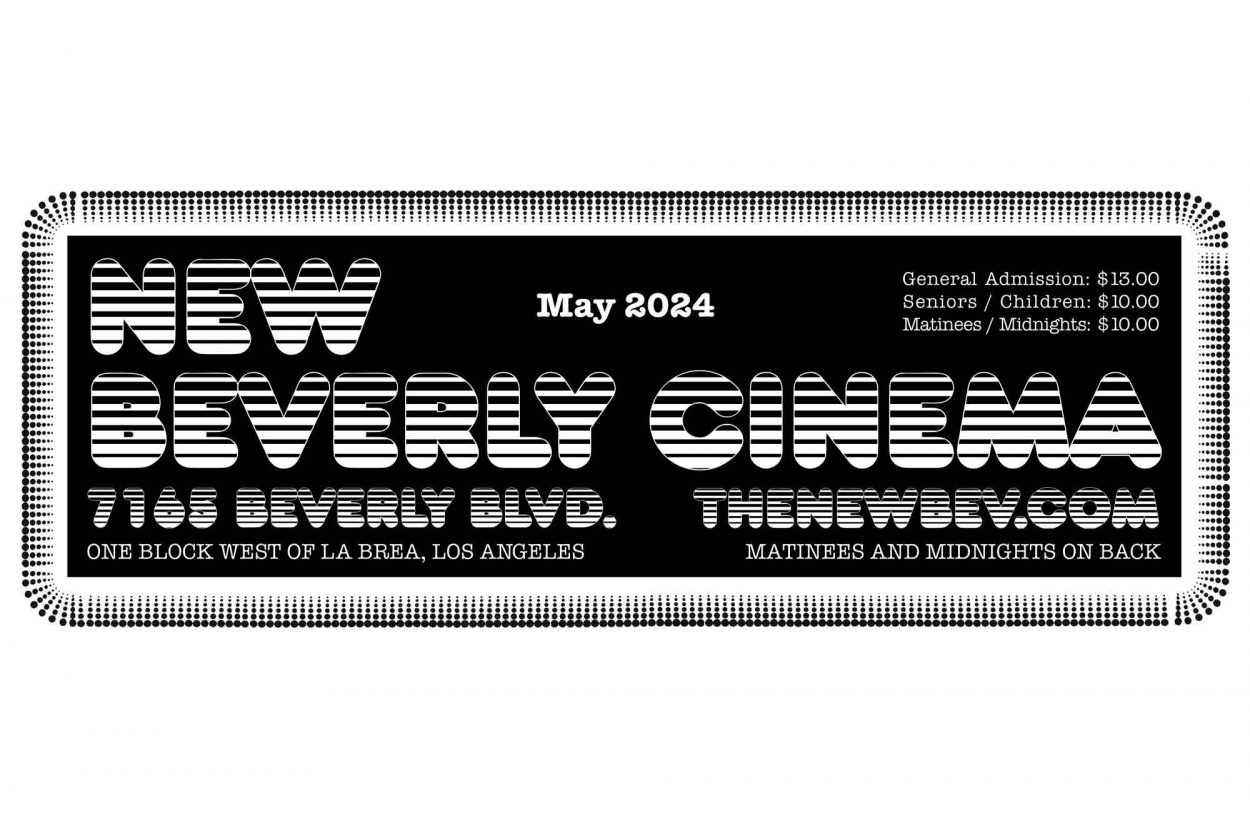As old friends and former crew members Admiral James T. Kirk (William Shatner), and Chief Engineer Montgomery “Scotty” Scott (James Doohan), approach the docked Star Ship Enterprise aboard the small transport shuttle, it’s impossible not to share their sense of wonder and reverence for the updated NCC-1701, while they take in the ship’s clean lines and rounded precision artistry. Unlike the blue collar looking Nostromo in Alien, the Enterprise gleams like a polished diamond as the scene slowly unfolds, riding the wave of music that composer Jerry Goldsmith ebbs and flows like the moon controlling the tide. It’s epic filmmaking that commands the big screen, allowing Star Trek: The Motion Picture to break out of its rusty television cage and run – successfully transitioning to a bigger canvas that’s worthy of the expansiveness of space (the final frontier).
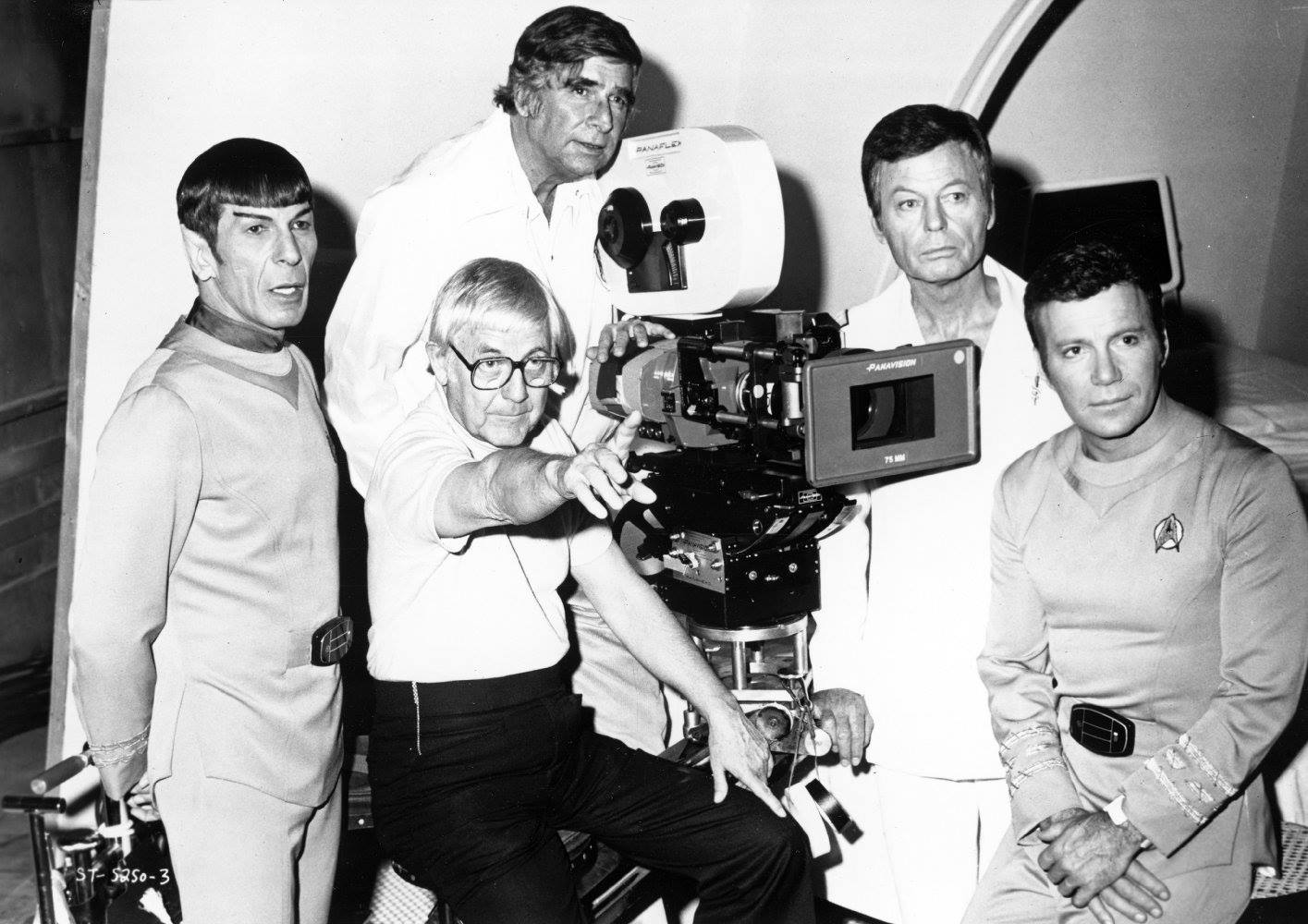
Two-time Academy Award winning director Robert Wise, who had proven himself a master of multiple genres, was tapped to helm Gene Rodenberry’s prodigal sci-fi son. Wise had edited Citizen Kane, directed two Best Picture musicals (West Side Story & The Sound of Music), as well as helming The Day the Earth Stood Still, The Sand Pebbles (Best Picture nominee), The Haunting and The Andromeda Strain. His resume ran the gamut of story-telling diversity and it would take all of Wise’s experience and knowledge to navigate a shoot that began without a finished shooting script and was beset with technical delays (the 15 million-dollar budget was comically under-estimated, as the film would come in at 47 million). Wise introduces the main players (V’ger, Kirk, Scotty, Bones, Decker, Ilia, and Spock) individually, much like Jonathan Demme reveals the Talking Heads in Stop Making Sense, with Uhura, Chekov and Sulu appearing at the same time as they react to Admiral Kirk’s return to the bridge.
When a bearded Dr. “Bones” McCoy and Admiral Kirk are reunited in the transporter room, the cantankerous good doctor belly-aches that he was drafted for this mission, and when Kirk extends his hand with the plea, “Damn it Bones, I need you. I need you badly!” The two actors vocal cadence plays out like an Off-Broadway production of the Tempest – a kind of Shakespeare in space. The actors appear not unlike two newborn deer trying to find their legs, as they negotiate their way from the RCA, GE boxes that sat in people’s homes – to the expectations of the silver screen canvas. Screenwriter Harold Livingston had just five weeks (after another scribe bowed out) to get the script ready to shoot after the studio scrapped the reboot of the series Star Trek: Phase II – in favor of a big screen Star Trek rebirth – with the success of Close Encounters proving that Star Wars wasn’t an anomaly for sci-fi hungry audiences.
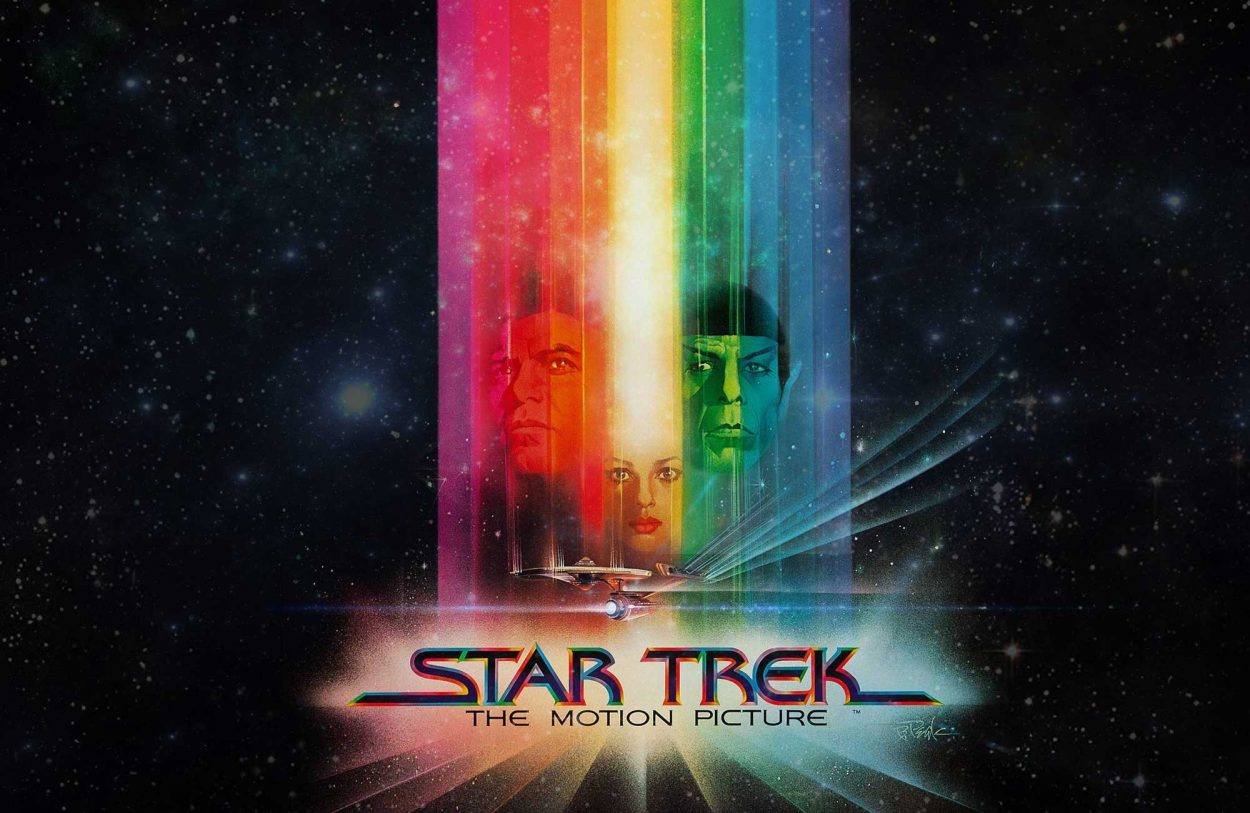
While STTMP detractors deride the film for what it lacks in terms of action and pace, the film is actually an excellent representation of what Star Trek the Original Series was intended to be – morality tales with some religious and political issues of our time Trojan-horsed into an intelligent science fiction conversation with its audience. Trek creator Gene Rodenberry had already cut his teeth on Have Gun – Will Travel, with the show’s main character “Paladin” (Richard Boone) preferring to dispense ethics and morals in lieu of violence, but the mercenary gun fighter always kept his .45 caliber Colt revolver with the platinum chess knight piece on the handle at the ready. The nomadic nature of the show’s protagonist, certainly helped Rodenberry develop the necessary storytelling structure skills that would allow Star Trek to avoid merely being the equivalent of CHiPs in space – interplanetary space cops looking for bad guys.
Unlike the super hero films that dominate today’s box office, STTMP doesn’t have a MacGuffin-like device in the hands of a villain that wants to end the world. Trek’s threat in its big screen maiden voyage is an alien cloud of energy (V’ger) that is controlled by a highly evolved artificial intelligence seeking to conjoin with its creator. That’s heady stuff for a 1979 studio picture, even by Star Trek standards. STTMP’s cinematic aspirations have Kubrick’s 2001: A Space Odyssey all over the special effects sequences, with breathtaking matte, roto-scope and model shots that are not only the most visually stunning of the franchise, but when supported with Goldsmith’s score, are in the conversation with the best that’s ever been put on screen.
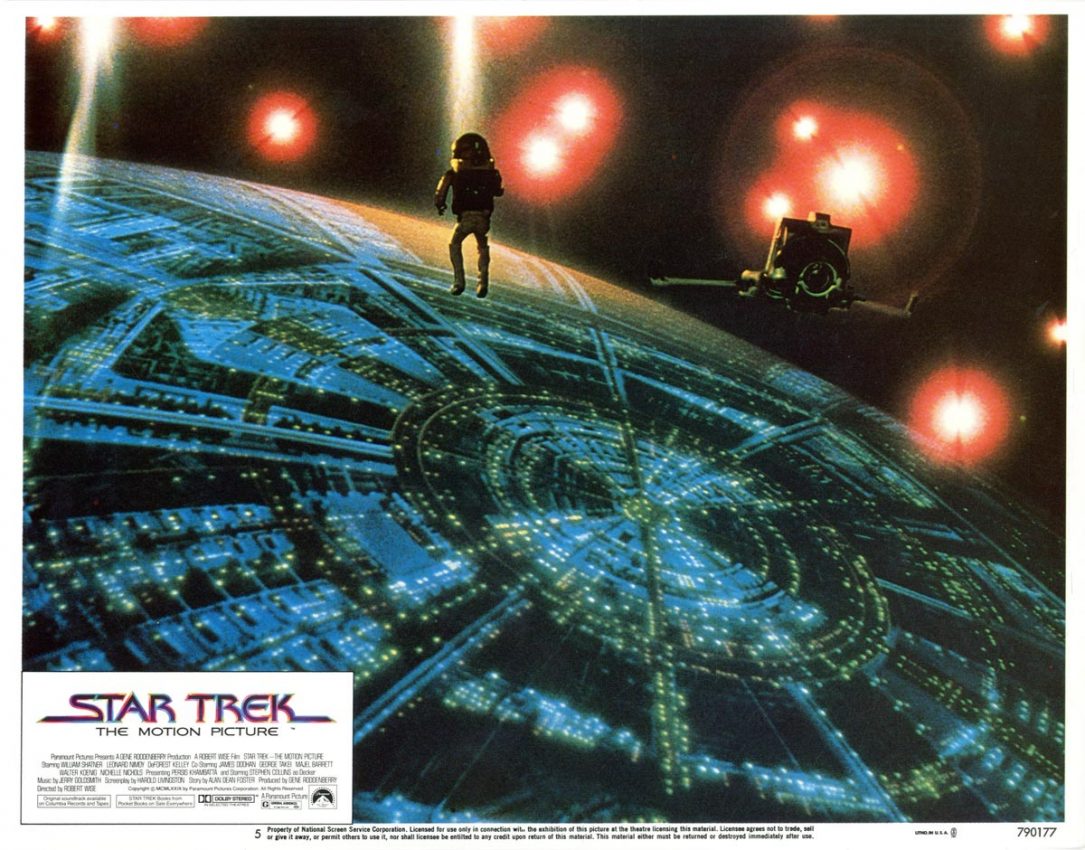
Paramount initially elected to use Robert Abel & Associates to head up the special effects after Douglas Trumbull (holding out for a directing gig) turned the studio down. Abel & Associates were let go by the studio after racking up 5 million dollars in contracted charges, while falling woefully behind the film’s effects schedule. Trumbull (who was working in a consulting/supervisor capacity for the film’s special effects) took over the daunting task of getting the effects back on schedule, and with the help of John Dykstra, Robert Yuricich, and the entire effects team – Star Trek: The Motion Picture uses visuals in the same way that Shakespeare uses language – challenging your mind to take in the beauty and complexity of how the story is presented.
Trumbull used a special periscope lens system to shoot the model of the Enterprise in a way that would match the scale of the big screen requirements. His team used light reflecting off over 50 little dental mirrors to give the illusion of various light sources in space. Multiplane exposures of artwork were used to fill in the crew’s reaction shots to what was appearing on the ship’s monitor, or when Spock attempts to approach the alien power cloud bathed in harsh blue light – maneuvering his space suit close enough to perform his signature mind meld. Spock’s external view of the breath-taking images as he enters V’ger are reason enough to see the film on the big screen.
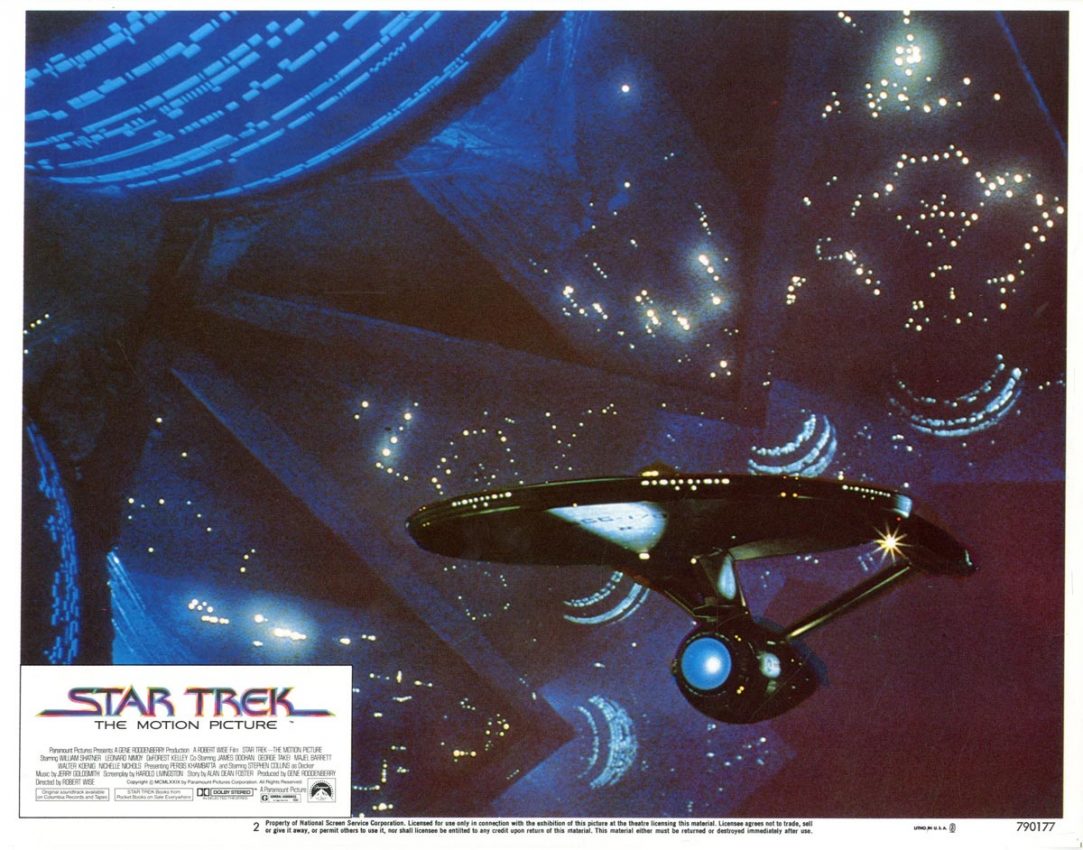
While Trek loses a lot of its playful sense of humor in the transition to the big screen, it is replaced by superb ensemble acting. Shatner struggles with the mid-life crisis of wanting to be relevant again, usurping command of the Enterprise from Captain Decker (Stephen Collins) “I’m taking over the center seat, Will,” flaunting his battle tested experience for just such an instance as the alien force bearing down on earth. Collins (an actor who had never seen a single episode of Star Trek) tries to hold his ground, forcefully pointing out to Admiral Kirk that due to the ship’s design changes, he alone should remain in the Captain’s chair. Persis Khambatta as Ilia, creates one of the most interesting, intelligent and vulnerable screen performances in science fiction history. Her striking good looks and intimidating shaved head, are softened by the hurt she carries from a past romance that Captain Decker had broken off. When the alien cloud probes the Enterprise’s bridge and attempts to hack the computer records, it ultimately leaves with Ilia to further the alien vessel’s “insatiable curiosity”. She later returns to the Enterprise as a probe programmed to communicate to Admiral Kirk that V’ger is on a mission to locate the “creator” and become one with it. When Ilia’s examination is complete, “all carbon units will be reduced to data storage.” This was a direct way of informing the crew, that they too will be body snatched and absorbed into V’gers artificial intelligence needs. Her transformation is powerful as the doppelganger like cyborg that roams around the ship to collect information for V’ger, all the while struggling to reconcile the emotions still buried within her soul. Ilia is a character that should’ve remained as a regular crew member in the Star Trek voyages.
The rest of the Enterprise crew? Hell, it’s like spending an evening with old friends who offer up interesting conversation. Uhura (Nichelle Nichols), Leonard McCoy (DeForrest Kelley), Mr. Sulu (George Takei), Doohan’s “Scotty” and Spock (Leonard Nimoy), bring back to life their characters that were made to be performed on a grander scale. I saw STTMP on opening day as a 10-year-old, having grown up with the original series in syndication. The film experience for me all those years ago felt like riding in a space ship and looking out the window. I just ate my Red Vines and gazed into space, happy to see my old TV heroes back together again, and remarkably, the majority of the effects hold up to this day. STTMP is a film that not only celebrates the reunification of the Enterprise crew, but the art of filmmaking as a collaboration that can transport an audience into places like deep space – with a Jerry Goldsmith score that remains one of his very best.
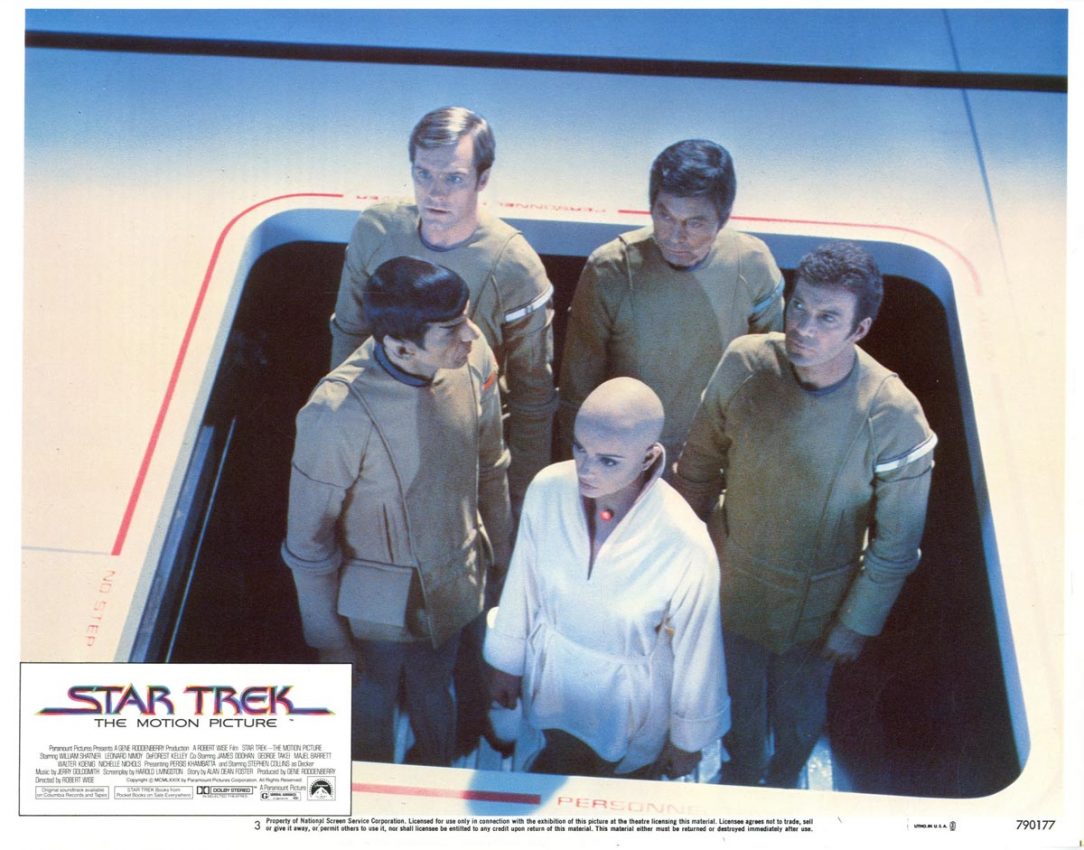
Star Trek: The Original Series was cancelled in the spring of 1969, after three seasons and 79 episodes. While never a network darling, the show was granted a reprieve from cancellation after its second season, due to a passionate letter writing campaign that inundated NBC with tactile proof that the show (despite the ratings) did indeed have a fan base. While a second letter campaign couldn’t keep Trek on the air after season three, the cultural impact of the show (in all its different iterations) and its longevity, can be retraced to the letters that convinced the brass at NBC to give the show a third season. It’s the third season that allowed Trek to reach 79 episodes – a number that fell short of the industry standard 100 episodes necessary for syndication – but still enough content for affiliates looking for a show to go up against the six-o’clock news.
For Trekkies, getting Star Trek: The Motion Picture to the movie theater was a “space odyssey” of its own. We didn’t care that the lab was sending reels that were still wet to waiting film cans as they raced to make the film’s opening (Robert Wise always called the film a “rough cut” and eventually put out a director’s cut on DVD). We don’t apologize for the film’s Blue Danube-esque sequences that play out like a presentation at the Griffith Observatory. The fans brought this franchise back to life, and we’ll be damned if we’re going to be shamed into not liking it because it doesn’t have any spaceship dog-fights, or bad guys with labored breathing. In STTMP the plot is dense, the crew ethnically diverse, the music and visuals kick ass, and an independent bald woman is abducted by alien artificial intelligence. What’s not to like? For fans of the original series, this was the band getting back together and they’re playing Miles Davis B-sides. Pour yourself a drink, sit back and enjoy the show.
Star Trek: The Motion Picture screens June 9 & 10.

